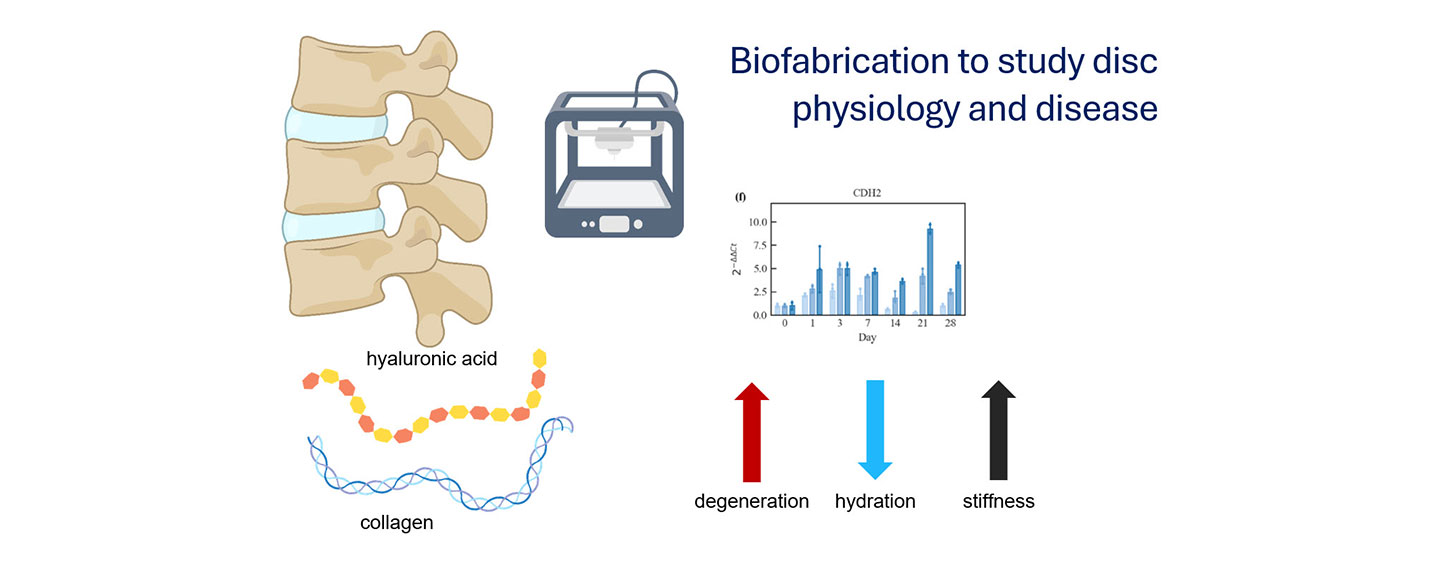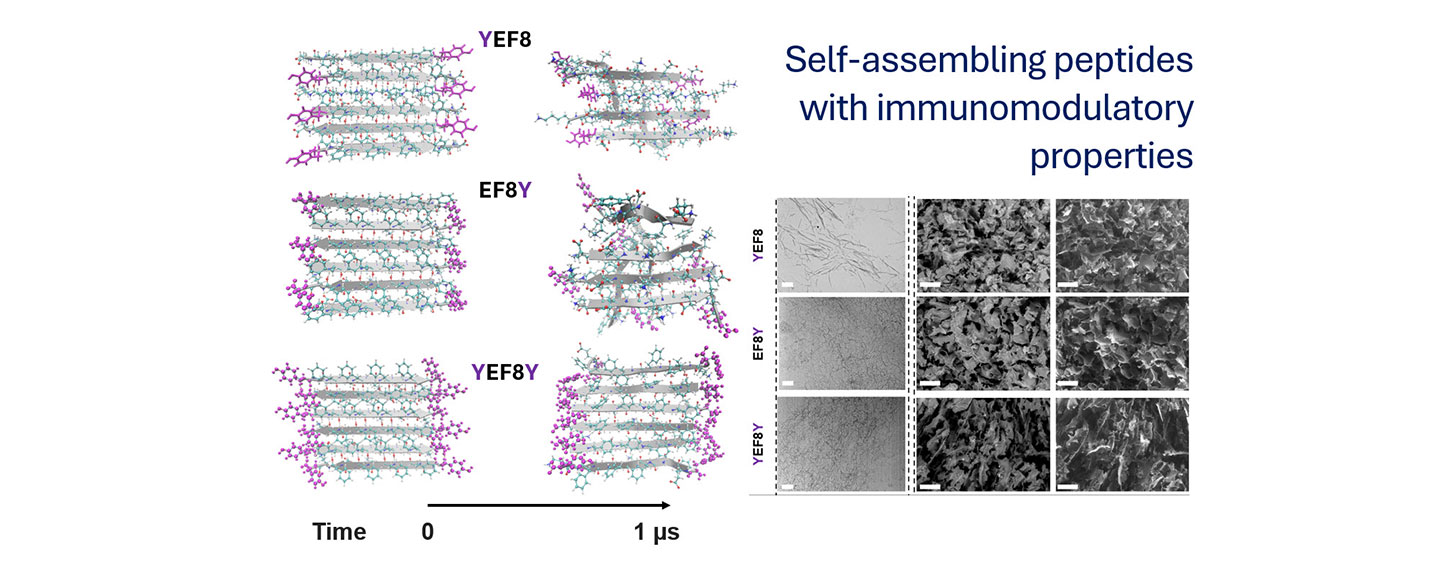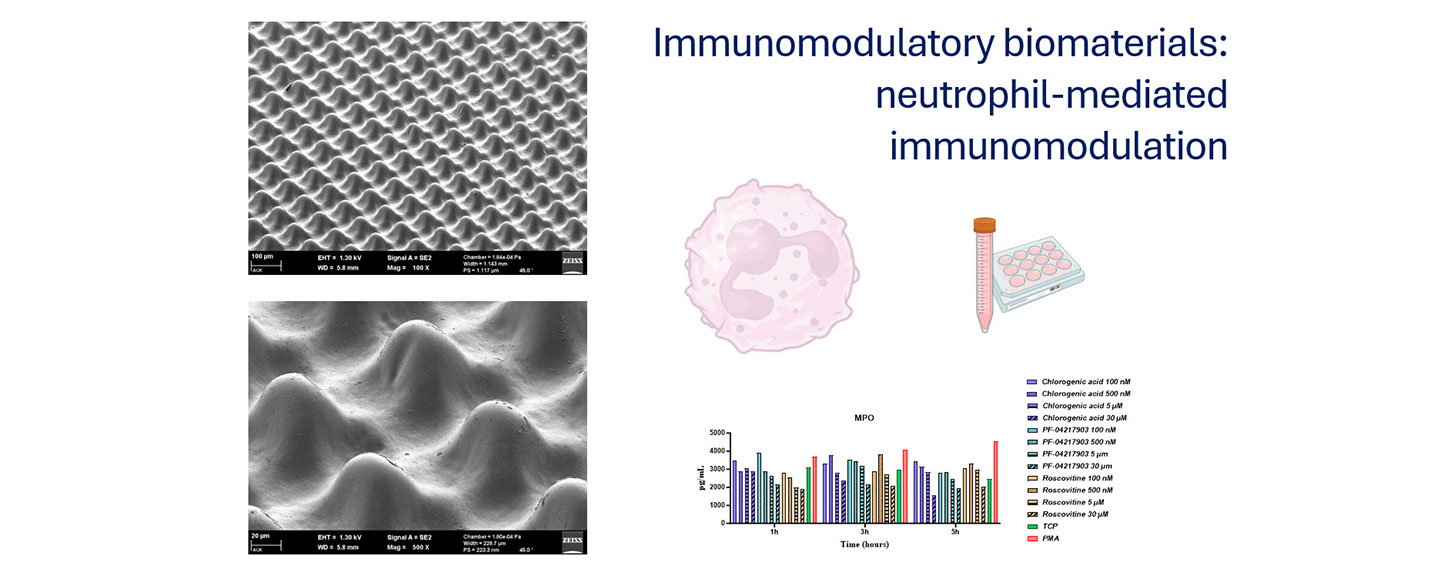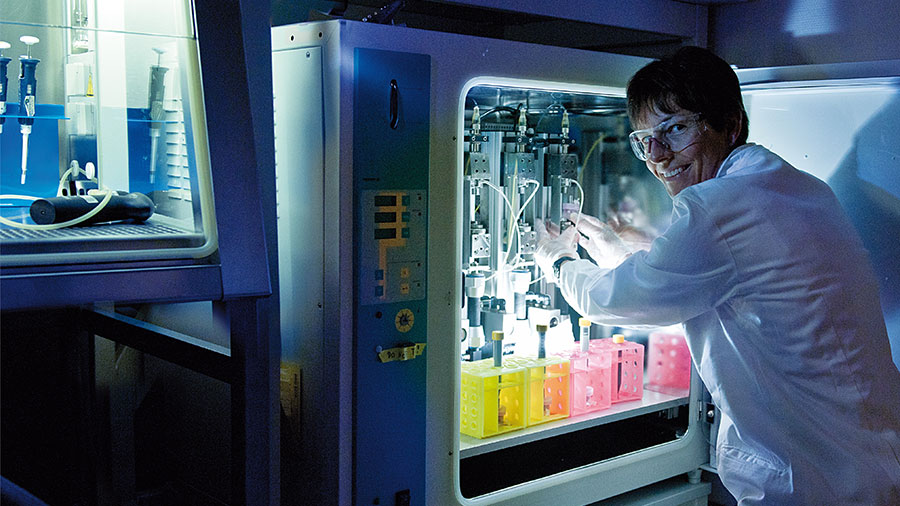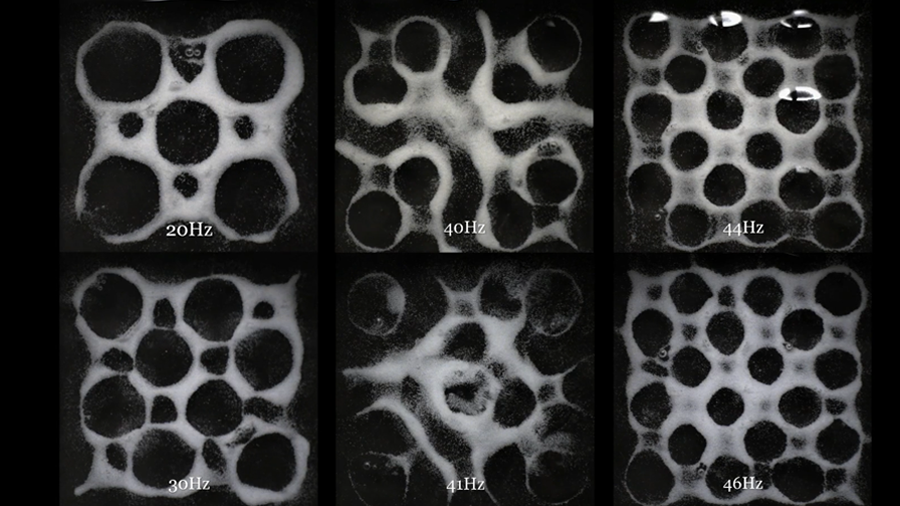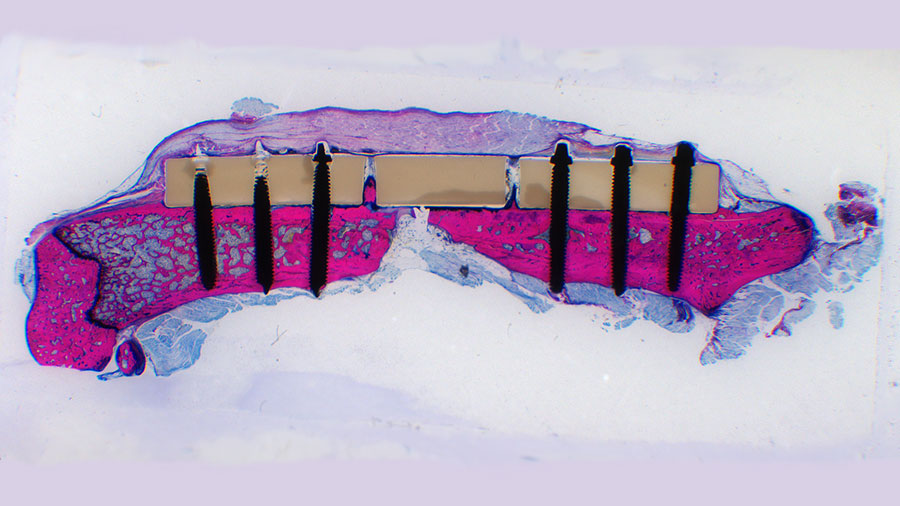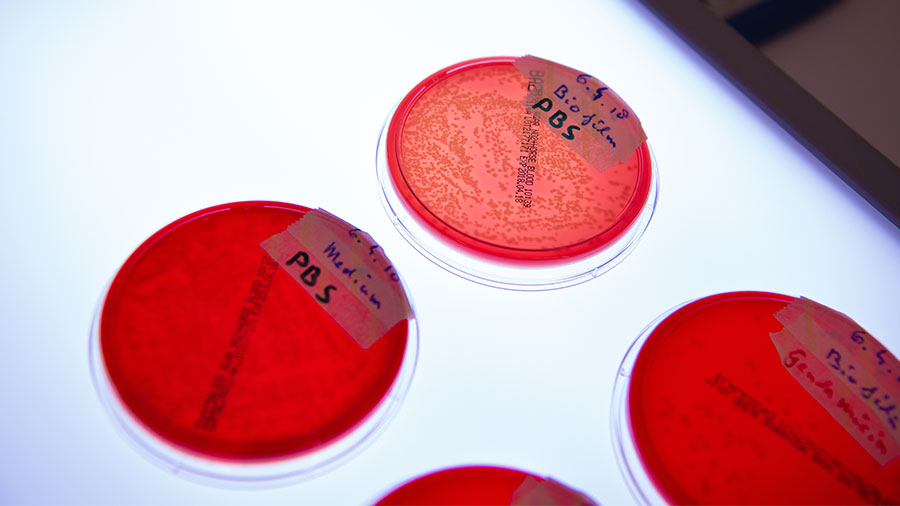Biomedical Materials
Materials and (bio)manufacturing methods to improve patient care in musculoskeletal disorders

The Biomedical Materials focus area at ARI is committed to the design of advanced biomaterials and the development of (bio)manufacturing technologies to achieve improved patient care and outcomes in musculoskeletal disorders.
We target a range of tissues and clinical applications, mainly bone, cartilage, intervertebral discs, and orthopedic infections. A significant part of our research is dedicated to the clinical translation of biomaterials for antibiotic delivery, as well as the development of soft biomaterials for the delivery of antibacterial agents and biological stimuli.
We are also deeply involved in biofabrication for orthopedics, working on the development of bioinks and biofabrication strategies to advance the field and introduce innovative tissue models and tissue regeneration techniques. Our expertise extends to the synthesis and chemical modification of biopolymers, aiming to achieve specific physical, chemical, and biological properties that are essential for designing biomaterials for musculoskeletal regeneration.
Our team has a high level of expertise in hyaluronic acid and self-assembling peptides, and we regularly utilize other materials such as alginate, collagen, gelatin, cellulose derivatives, and synthetic polyesters. Understanding how biomaterials interact with cells is crucial to our work, as we use this information to design biomaterials that promote musculoskeletal regeneration.
In this context, we investigate the immunomodulatory properties of biomaterials, focusing on unraveling the key mechanisms of biomaterials-mediated neutrophil activation and macrophage polarization. This knowledge helps us design biomaterials that effectively support musculoskeletal regeneration.
Finally, we are committed to education and training, sharing our expertise with external collaborators to promote best practices in biomaterials research across these fields.
Selected collaborative projects
- 2020-2026- Establishment of the Baltic Biomaterials Centre of Excellence. (partner, H2020 funded project, number 857287).
- AOCMF Boost - Instructive bone regenerating hydrogel for translational bone repair, 2022-2026.
- Leading House for the Middle East and North Africa for Research Partnership Grant “Space ImmunoBioInks” (RPG-2022-38) and Consolidation 2023 “SI-WHIM” (COG-2023-35).
- Engineered full-organ 3D intervertebral disc as standardized model for studying disc degeneration and disease. (INDEED, coordinator SNF-ANR Bilateral project, nber: 310030E_189310)
- 3D Printed-Matrix Assisted Chemically Modified RNAs Bone Regenerative Therapy for Trauma and Osteoporotic Patients. (cmRNAbone, H2020 funded project, nber: 874790).
Selected scientific publications
- J.K. Wychowaniec, E.I. Bektas, A.J. Vernengo, M. Muerner, M. Airoldi, P.S. Tipay, J. Sapudom, J. Teo, D. Eglin, M. D'Este, Effect of molecular weight of tyramine-modified hyaluronan on polarization state of THP-1 and peripheral blood mononuclear cells-derived macrophages, Biomaterials Advances 169 (2025) 214166.
- R. Randriantsilefisoa, M. D'Este, A chemical toolkit for the fabrication of antibacterial wet adhesives using one pot synthesis, Materials Today Chemistry 43 (2025) 102504.
- G. Miklosic, S.J. Ferguson, M. D’Este, Engineering complex tissue-like microenvironments with biomaterials and biofabrication, Trends in Biotechnology 42(10) (2024) 1241-1257.
- D. Van der Heide, L.P. Hatt, E. Della Bella, A. Hangartner, W.A. Lackington, H. Yuan, F. De Groot-Barrère, M.J. Stoddart, M. D'Este, Characterization and biological evaluation of 3D printed composite ink consisting of collagen, hyaluronic acid and calcium phosphate for bone regeneration, Carbohydrate Polymer Technologies and Applications 7 (2024) 100518.
- A. Schwab, R. Levato, M. D’Este, S. Piluso, D. Eglin, J. Malda, Printability and Shape Fidelity of Bioinks in 3D Bioprinting. Chem. Rev. 2020.
- A. Schwab, C. Helary, R. G. Richards, M. Alini, D. Eglin, M. D'Este, Tissue mimetic hyaluronan bioink containing collagen fibers with controlled orientation modulating cell migration and alignment. Materials Today Bio 100058 2020/6/1
- D. Petta, U. D'Amora, L. Ambrosio, D. Grijpma, D. Eglin, M. D'Este, Hyaluronic acid as a (bio)ink for extrusion-based 3D printing, Biofabrication 12(3) (2020) 032001.
- D. Petta, A.R. Armiento, D. Grijpma, M. Alini, D. Eglin, M. D'Este, 3D bioprinting of a hyaluronan bioink through enzymatic-and visible light-crosslinking, Biofabrication 10(4) (2018) 044104.
- M. D'Este, D. Eglin, M. Alini, Lessons to be learned and future directions for intervertebral disc biomaterials, Acta Biomater 78 (2018) 13-22.


